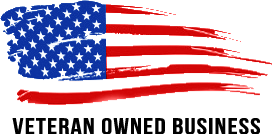Frequently Asked Questions About Refacing
A: The price for refacing will be affected by the size of your kitchen, what features you want to include, structural changes, modifications, wood species and door style chosen. We can help to determine your investment based on your needs and wants, then help add or subtract options based on your budget
A: While the hardness of the wood is a factor, I recommend to my clients that they focus on which wood they like aesthetically. You may be disappointed in how your kitchen feels if you don’t love the look you chose solely based on durability.
A: Average sized kitchens are completed in about a week. If yours is an oversized kitchen or if there are a lot of modifications or additions, the project could extend a day or two longer.
A: By using high quality products and very experienced installers, yes, they will look new. We also make every effort to design a more user-friendly kitchen.
A: With Refacing you can change from one wood species and stain color to another. We accomplish this by installing a real wood “skin” to your existing cabinets. We offer 13 different wood species and 30+ standard stain colors. You can also change the door and drawer front style for an updated look. Modifications and custom cabinet additions are possible. Refinishing will cost a little less, if done properly. The stain color can be matched or made a little darker but, in the end, all you end up with is a shiny kitchen and the same outdated look.
A: Yes. We offer free in-home design help. We also bring samples for you to inspect. It is important for you to collect pictures from magazines or the web so that we can get an idea of your style and color preferences. Together we will design your new kitchen, finalize your choices and I will prepare a written proposal with a firm price.
Yes. This type of work is messy. We put up plastic walls to contain the dust and also protect the floor and countertop. We will also need a staging area for material and tools. They will stay in place until completion.
A: Average savings are anywhere from 25 to 50 percent. If you replace your cabinets, you will need to install a new countertop, sink and backsplash. The floor will have to be replaced if the footprint is not the same. Don’t forget the plumber and electrician. With a complete “tearout’ you will not have the use of your kitchen for a longer period. With Refacing you will have the use of your kitchen through the whole project. We clean up at the end of each workday.
A: 100% financing is offered through LightStream, a division of Truist. They partner with over 25,000 home improvement contractors in all 50 states. Finance one or more projects. The funds are deposited directly into your account. They offer low rates and a fast paperless process. No equity required. Instant approvals in most cases. Programs for most credit ratings.
A: We offer a two year “no hassle” warranty on installations. All our door suppliers offer at least a one-year warranty on their products.
A: Rigid ThermoFoil is a process that uses heat and heat-activated glue under immense pressure to bond Polyvinyl Chloride (PVC) film to a substrate, typically to a water-resistant medium density fiberboard (MDF). The resulting product is very durable and will not dent easily. The laminate surface resists stains. Stubborn residues such as grease can be removed with a mild all-purpose cleaner. They come in solid and wood-grain colors. RTF is easily the most feasible cabinet reface option for those looking to restore their cabinetry on a budget. RTF has been praised by Better Homes and Gardens as the “40 year kitchen” and has become the most popular choice for homeowners who dream of beautiful cabinets without the care and maintenance required for natural wood cabinets.
TFL and HPL are both durable and resistant to wear and tear, but they have some key differences in terms of their materials and manufacturing processes, durability and performance, cost and availability, and applications.
Thermally Fused Laminate TFL Panels are produced by fusing a resin-based sheet of decor paper directly to a core. There are no kraft paper layers used in TFL. Pressure and heat activate the resin-based sheet and create a cross-linked bond with the core. This seals the core making it impossible to peel away. TFL panels have a lower cost. Great for Shaker Style doors.
High-Pressure Laminate HPL Panels are produced by saturating multiple layers of kraft paper layers with phenolic resin. An additional protective overlay as well as the decor paper are placed on top of the kraft paper before pressing. These layers are all fused together with high heat and pressure and glued to the core resulting in a harder tougher surface. Vertical Grade is used for cabinets. Post form is used for both cabinets and countertops. Only slab (flat) edge banded doors can be made with this material.
No. Once this material is glued on, it is there to stay. You would literally have to chisel it off. We use low VOC glues for your protection.
A: If you decide on new appliances, we can modify your existing cabinets to accommodate different sizes. The cabinet above the stove can also be modified to install a microwave. If these changes require plumbing or electrical work, we recommend licensed professionals. Many other modifications are possible.
A: We can reuse your boxes if they have four sides and are functional. Sometimes the drawer front serves as the fourth side. On these occasions we will have to replace them. We need a fourth side to install the new drawer fronts.
A: Yes. Even though they have a tendency to “rack”, they can usually be refaced. The racking, or twisting and warping, is caused by temperature changes as they are constructed with particle board.

